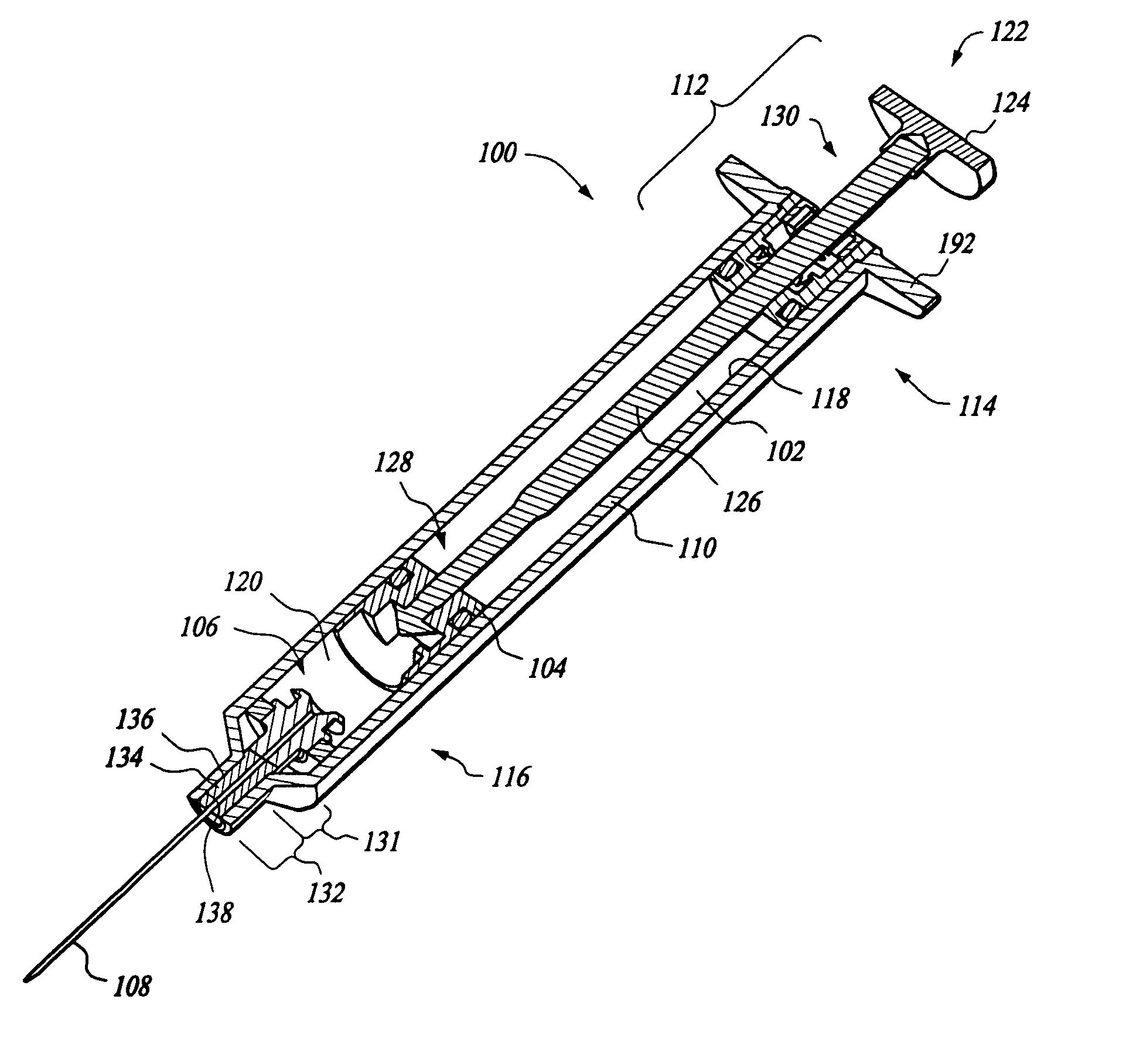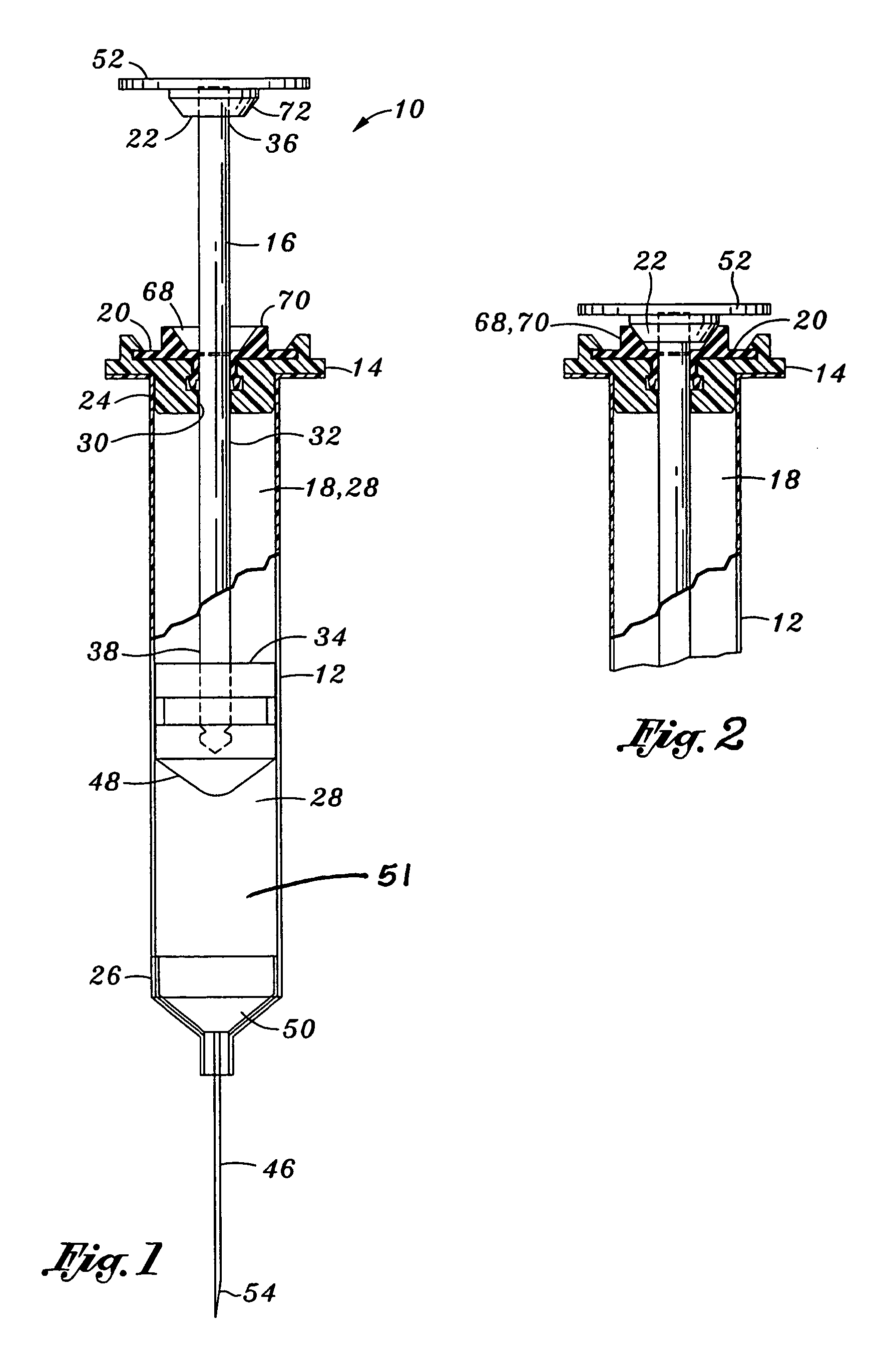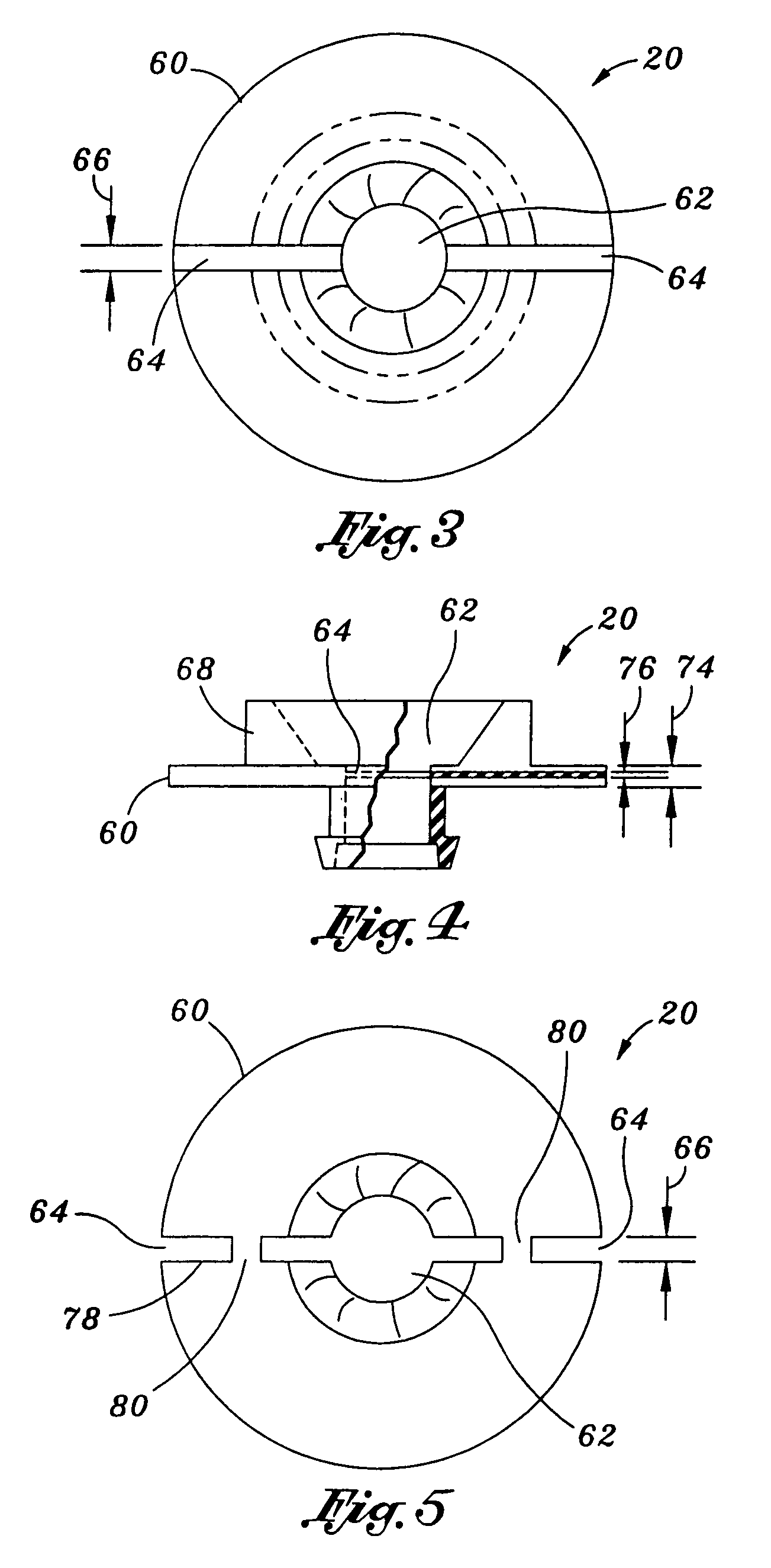Syringe
a technology of syringe and needle, which is applied in the field of syringe, can solve the problems of unremovable safety feature, unremovable safety feature, and contaminated needle, and achieve the effect of increasing bridge width, bridge width, and bridge width
- Summary
- Abstract
- Description
- Claims
- Application Information
AI Technical Summary
Benefits of technology
Problems solved by technology
Method used
Image
Examples
Embodiment Construction
[0054]Referring now to the drawings wherein the showings are for purposes of illustrating the preferred embodiments of the present invention only and not for purposes of limiting the same, FIG. 1 is a cross sectional view of a retractable needle safety syringe 10 with mitigated retraction in accordance with an aspect of the present invention.
[0055]An embodiment of the syringe comprises a syringe body 12, an attachment base 14, a plunger assembly 16, a variable vacuum compartment 18, a shaft brake 20, and a ram member 22. The syringe body 12 defines opposing top and bottom syringe body portions 24, 26 and includes a syringe cavity 28. The attachment base 14 defines a shaft orifice 30 and is attached to the top syringe body portion 24. The attachment base 14 may form a seal with the body 12. The plunger assembly 16 includes a plunger shaft 32 and a piston 34. The plunger shaft 32 defines opposing top and bottom shaft portions 36, 38. The plunger shaft 32 is disposed throughout the sha...
PUM
 Login to View More
Login to View More Abstract
Description
Claims
Application Information
 Login to View More
Login to View More - R&D
- Intellectual Property
- Life Sciences
- Materials
- Tech Scout
- Unparalleled Data Quality
- Higher Quality Content
- 60% Fewer Hallucinations
Browse by: Latest US Patents, China's latest patents, Technical Efficacy Thesaurus, Application Domain, Technology Topic, Popular Technical Reports.
© 2025 PatSnap. All rights reserved.Legal|Privacy policy|Modern Slavery Act Transparency Statement|Sitemap|About US| Contact US: help@patsnap.com



